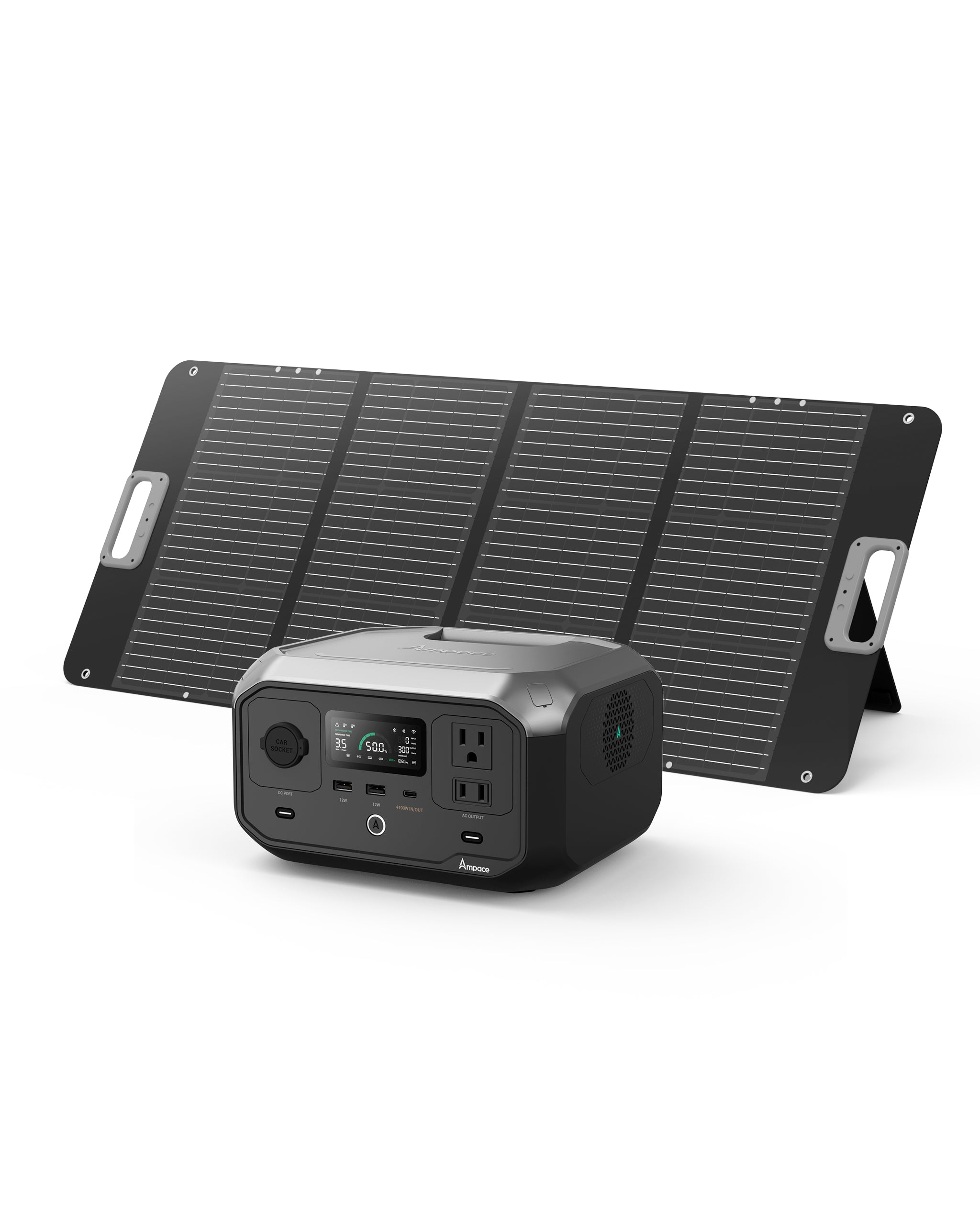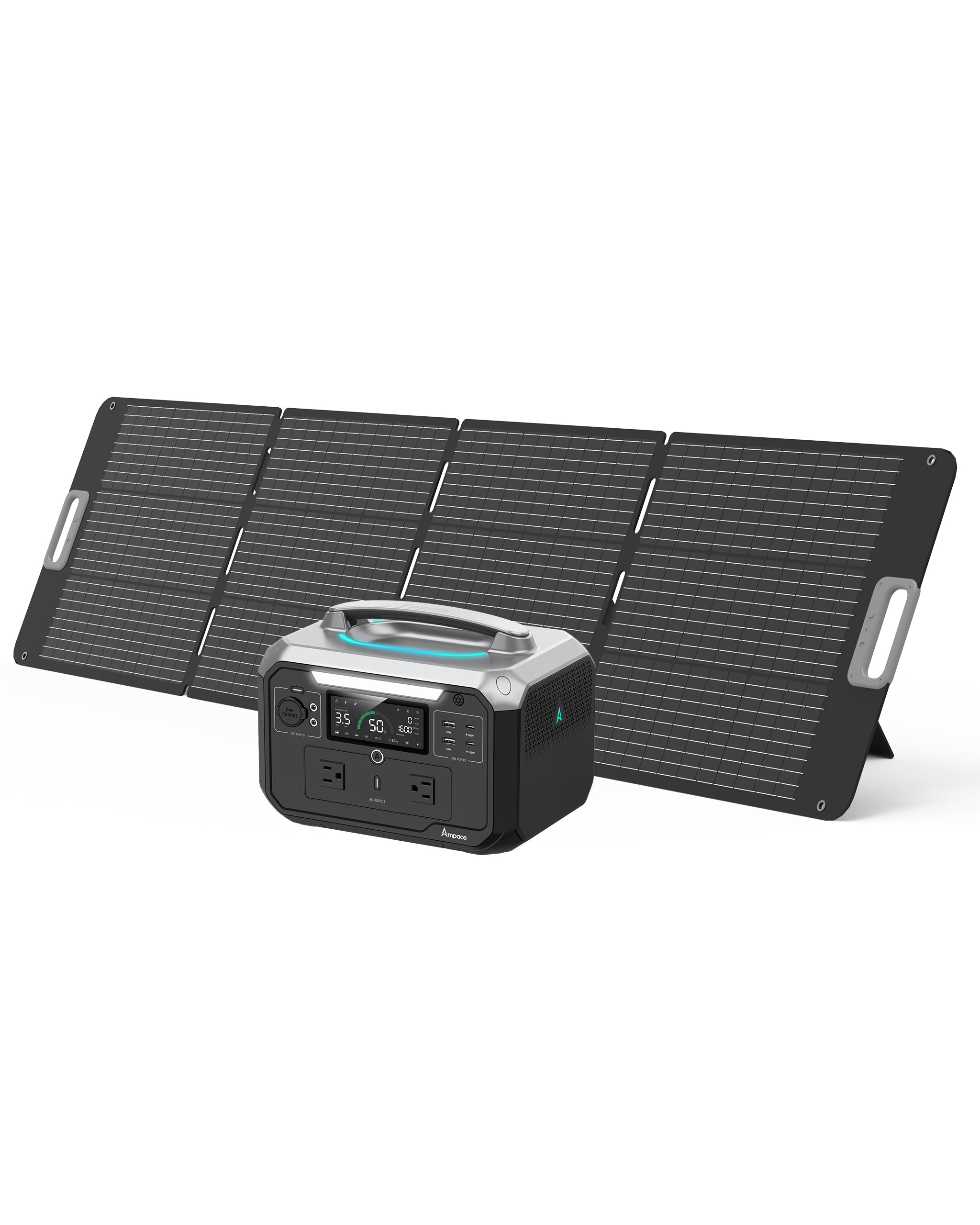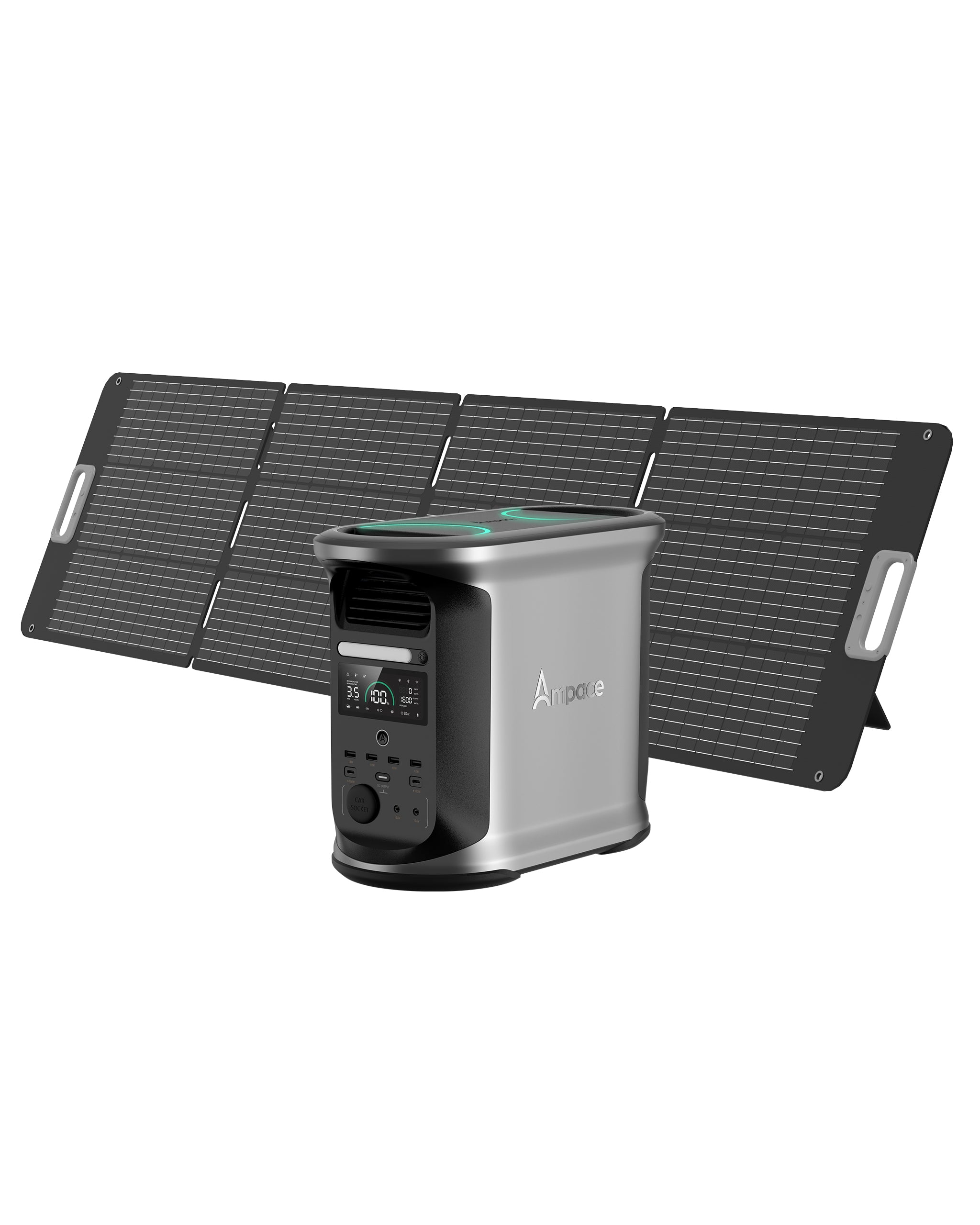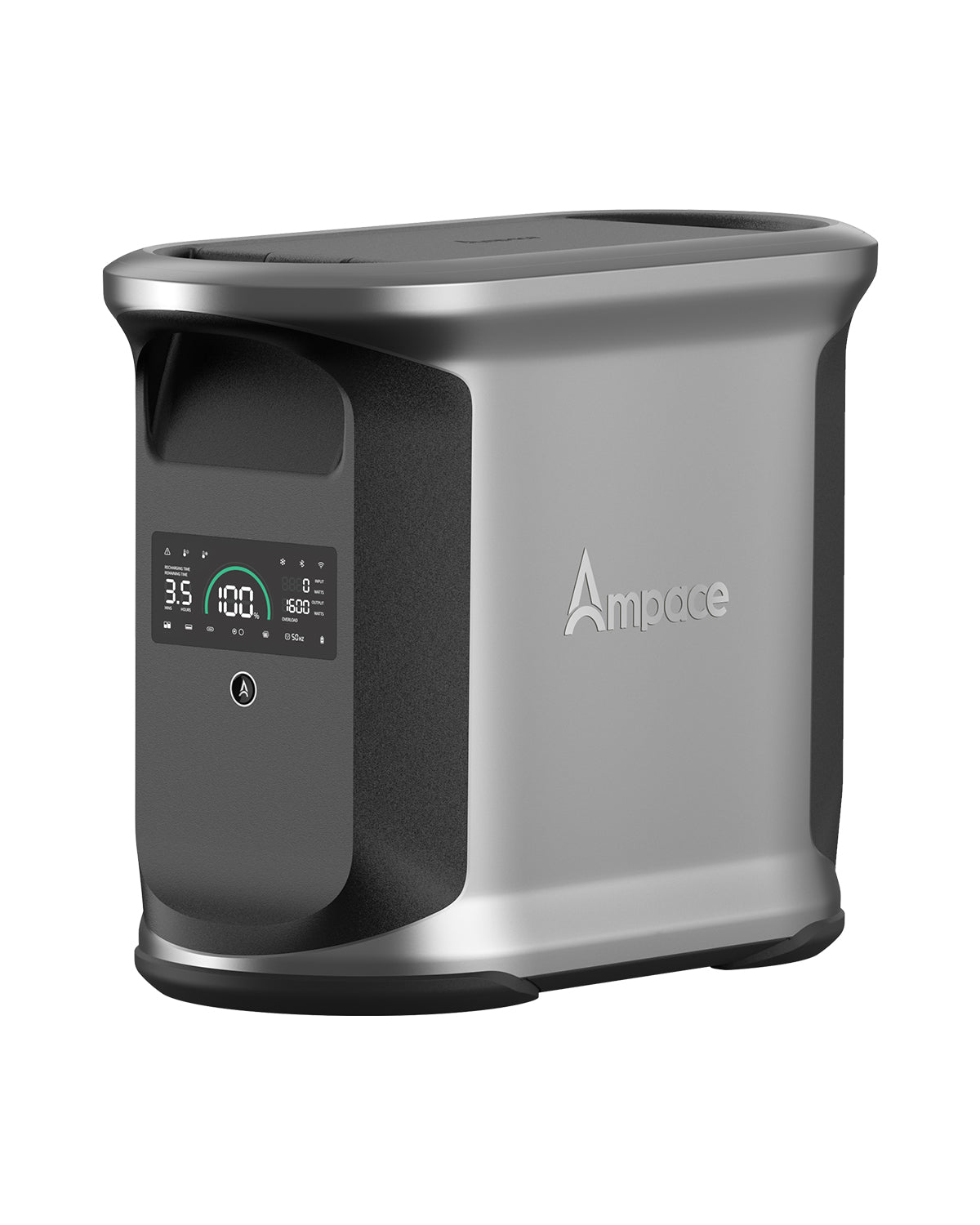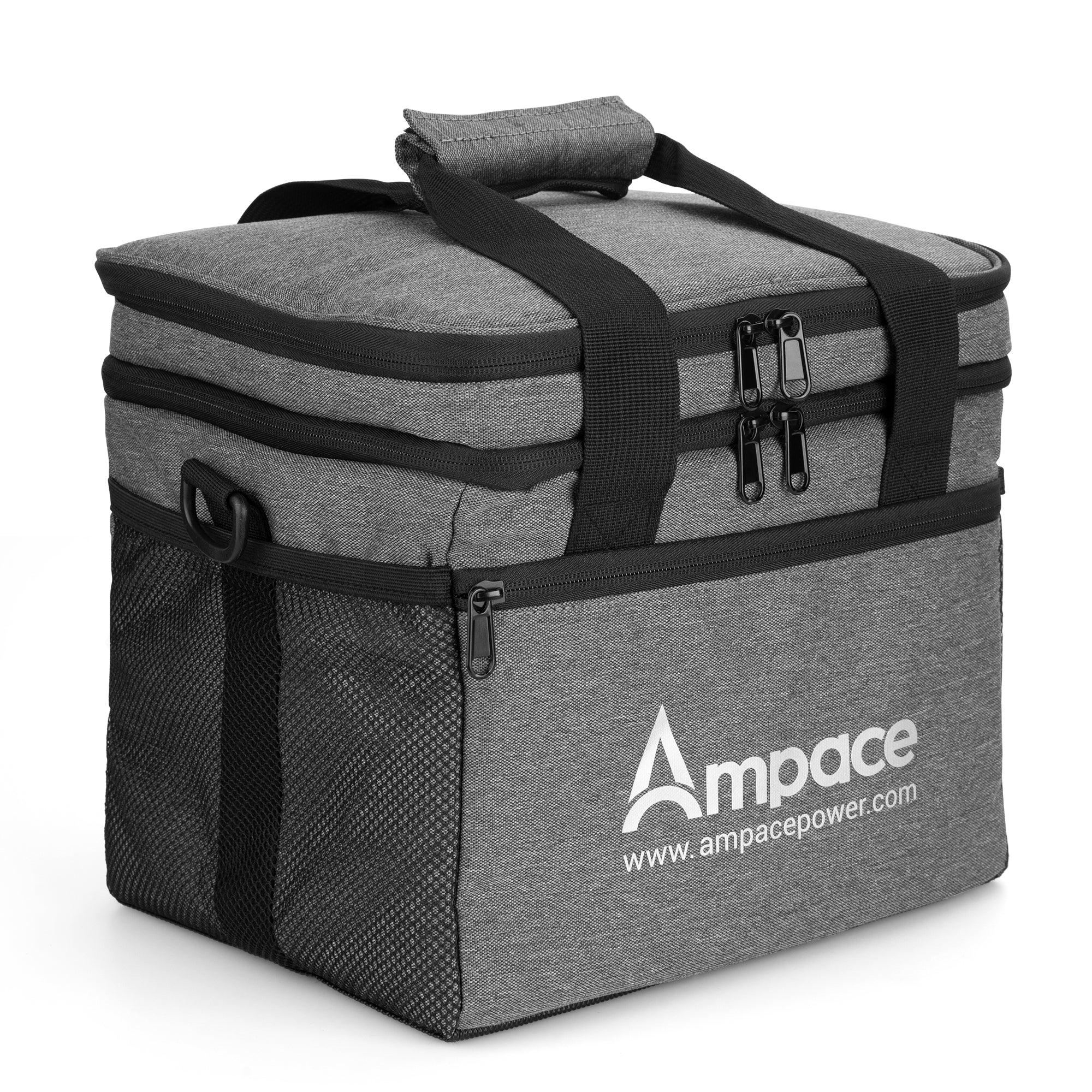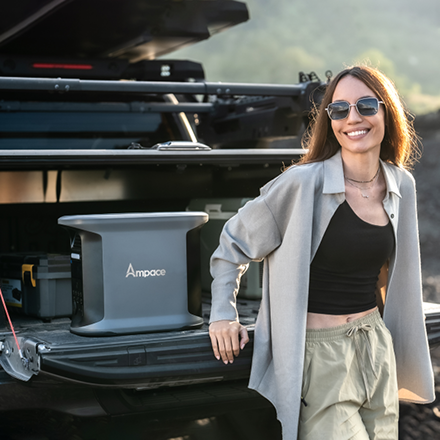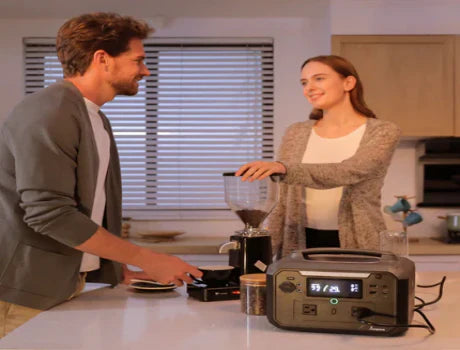Unlock the Full Potential of Your Solar Panels with the Right Angle

Table of Contents
- What Is a Solar Panel Angle?
- How Should Ampace Solar Panels Be Oriented for Maximum Efficiency?
- Factors Affecting Solar Panel Angle
- Why Is the Tilt Angle Important for Ampace Solar Panels?
- How to Find the Best Angle for a Solar Panel
- Ampace Solar Panels: Power Your Outdoor Adventures
- FAQs for Best Solar Panel Angle
The key to getting the most out of your solar panels is finding the best angle. Just like how plants reach toward the sun, your panels need to be tilted in the right direction to soak up all that sunlight. Whether it's the hot summer sun or the softer winter rays, adjusting the angle of your panels can make a huge difference in how much energy they produce.
Get the angle right, and you’ll see better efficiency, lower energy bills, and less reliance on the grid. Let’s explore how to find the perfect angle for your solar panels!
What Is a Solar Panel Angle?
The solar panel angle is the tilt at which your panels are installed. It determines how much sunlight they can absorb throughout the day. The ideal angle helps your panels capture the most energy. It’s usually based on your latitude and changes with the season. A good angle maximizes energy production, ensuring your system works efficiently.
The adjustment of the angle in implementing a Solar Panel is essential to get regular energy. In many countries, shorter daylight hours limit sun exposure, reducing the time solar panels receive direct sunlight. The time of solar panels getting sunlight also varies due to weather. In this case, the angle makes it easy for the solar panels to get the required sunlight.

How Should Ampace Solar Panels Be Oriented for Maximum Efficiency?
The Solar Panel needs to be oriented in a way that it captures the most amount of sunlight to generate energy. In Northern Hemisphere regions like the USA and Canada, Solar Panel direction should be south to receive maximum sunlight. In Southern Hemisphere regions like Australia and South Africa solar panel direction should be towards the north to get maximum exposure of sunlight.
Tilt angle is also very important in getting maximum efficiency from Solar Panels. To get maximum efficiency, it should match the location’s latitude. Also, varying the location in seasoned weather further enhances the performance of solar panels. In winter a steep angle is useful while in summer flat tilt helps to maximize efficiency of solar panels.
Portable Ampace Solar Panels increase their efficiency when used with ideal tilt angle. Using advanced methods like Solar Tracking mount can further improve the performance of solar panels by automatically adjusting panel’s orientation toward the sun. Proper orientation makes the Solar Panel produce efficient energy.
In the United States, solar panel tilt is around 30 to 35 degrees facing south to get the maximum energy in autumn. It changes to 50 to 55 degrees during winter. During summer, this angle reduces to around 15 degrees. The further the user's location is away from the equator, the more tilt angle will be needed for the installation of the solar panel.
Factors Affecting Solar Panel Angle
Your solar panel angle depends on several factors. Here are some key factors.
Geographical Location: It plays a big role in solar panel’s performance. The further north or south you are, the more you’ll need to adjust your panel tilt.
Roof Type: The roof type matters, too. A flat roof will need tilt frames, while a sloped roof might naturally fit your panels.
Sun Exposure: It is another key factor. Panels should be placed where they’ll get the most sunlight, avoiding shaded areas.
Season Changes: Adjusting the angle during different seasons helps maximize energy production year-round.
Why Is the Tilt Angle Important for Ampace Solar Panels?
The angle of the Ampace Solar Panel is very essential to get a proper source of energy. If the tilt is too steep or flat, Solar Panel will not be able to get proper sunlight. This will lead to not getting proper energy from the sunlight.
For Portable Ampace Solar Panels , manually adjusting the tilt allows the Panels to receive more sunlight. For example, in the USA or other Northern Hemisphere regions, a tilt equal to the location’s latitude is ideal. So, finding the best angle before installing the solar panel can increase efficiency and long-term cost savings.
How to Find the Best Angle for a Solar Panel
Seasonal adjustment of the solar panel's angle ensures proper sunlight exposure. For example, in the United States of America, the average daylight hours in Summer and Winter are 14-16 and 8-10 hours, respectively. This massive reduction in daylight hours increases the angle of the solar panel in winter.
The seasonal alternation in solar panels could vary up to more than 15°. For example, in California, Solar Panel optimal angle is 49° in Summer which reduces remarkably to 19° in winters. Geographical locations also play a very important role in the tilt angle of the solar Panel.
Using Solar Angle Tools
Solar angle calculators and apps, like PVWatts or SolarCalc, are great tools to help you find the best angle for your solar panels. These tools use your location, latitude, and the time of year to suggest the most efficient tilt for maximum energy production. They can save you time and effort, making it easier to optimize your setup.
It is important to consult a professional installer even if you have access to these tools. They have the expertise to ensure your panels are placed correctly, factoring in other elements like roof pitch and shading. This ensures you get the best possible performance from your system.

Ampace Solar Panels: Power Your Outdoor Adventures
Ampace offers two portable solar panel options to meet a variety of outdoor power needs, ensuring you can charge your devices and stay connected wherever your adventures take you.
Ampace 100W Solar Panel
Lightweight and Portable: At just 10.36 pounds, this solar panel is easy to carry, making it an ideal choice for activities like hiking, camping, or road trips.
High-Efficiency Conversion: With a 23% conversion rate, it efficiently transforms sunlight into usable power for fast charging.
Compact Design: It folds down to a small size, perfect for packing and transporting with ease.

Ampace 200W Solar Panel
Greater Power Output: Delivering 200W, this panel is suited for scenarios requiring more electricity, such as group camping, extended outdoor trips, or emergency power needs.
Equally Efficient: It also features a 23% conversion rate, ensuring rapid and reliable charging.
Durable Design: Rated IP67, it’s built to withstand harsh weather conditions like rain and snow, offering long-lasting performance.
Both options provide a reliable power supply in the outdoors, keeping your devices charged and your adventures energized. Whether you’re a solo traveler or part of a larger group, Ampace solar panels offer the flexibility and efficiency you need to harness the sun’s energy effectively.

FAQs for Best Solar Panel Angle
Why does the angle of my solar panels matter?
The angle of your solar panels directly impacts how much sunlight they absorb. The right tilt maximizes energy production, leading to better efficiency and lower energy bills.
How can I determine the best angle for my solar panels?
The best angle is usually based on your geographical location and the season. Tools like PVWatts or SolarCalc can help you calculate the optimal tilt, but it's always a good idea to consult a professional installer for the most accurate setup.
How does the tilt angle change with the seasons?
During winter, a steeper tilt helps panels absorb more sunlight due to shorter daylight hours. In summer, a flatter tilt is more efficient as the sun is higher in the sky, making it important to adjust your panels seasonally for maximum efficiency.
Can I adjust the angle of my portable solar panels?
Yes! Portable solar panels like Ampace can be manually adjusted to capture the most sunlight. Adjusting the tilt based on your location and the season helps increase their efficiency.
Do solar panel angles vary by region?
Absolutely. For example, in the Northern Hemisphere, solar panels should face south, while in the Southern Hemisphere, they should face north. The tilt also varies depending on your location’s latitude.





